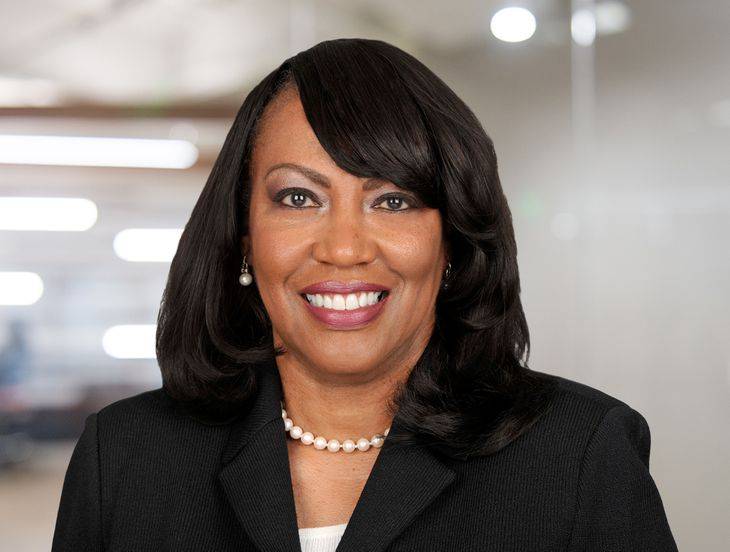Utilizing Diversity and Inclusion Efforts to Attract Talent: An Employer’s 6-Step Guide for Navigating the Workforce Shortage
Insights
3.01.22
If you are an employer feeling the impact of the Great Resignation, you are not alone. Employers across the country are dealing with the consequences of a historic labor shortage. While demand for labor has reportedly returned to 99% of pre-pandemic levels, the same cannot be said of the workforce’s return to work. The number of individuals who have or want a job has stagnated since summer 2020. Indeed, the results of the latest Fisher Phillips Flash Survey reveal that a staggering 94% of employers reported experiencing more difficulty than normal in retaining and recruiting workers in 2021, with more than half reporting “severe” difficulty compared to normal times. As we kick off the new year, there is little indication that the workforce shortage will subside any time soon – which means you’ll need to utilize creative strategies to remain competitive when recruiting top talent. One such strategy includes ensuring that outreach efforts are designed to encompass underrepresented groups of individuals. What do employers need to know about utilizing diversity and inclusion efforts to grow their workforce? Here’s a six-step guide to help you on your way.
Benefits of a Diverse Workforce
Many employers recognize that the benefits of diversity in the workplace go beyond brand recognition and increased profits. When businesses ensure that they are building their workforces with employees of different backgrounds and perspectives, it can increase productivity, improve decision-making, and foster greater innovation. A diverse workplace may also increase employee engagement and morale while decreasing turnover.
Applicants and Employees are Evaluating Your Diversity and Inclusion Efforts
Issues of diversity, equity, and inclusion have been a hot topic over the past few years and continue to be at the forefront of workplace concerns among job applicants and employees. According to a recent Glassdoor Diversity Hiring Survey, more than 3 out of 4 job seekers and employees (76%) report that a diverse workforce is an important factor when evaluating companies and job offers.
Having a diverse workforce is particularly important to historically underrepresented groups. For example, while nearly a third of job seekers and employees (32%) reported that they would not apply for a position at a company where there is a lack of diversity among the company’s workforce, that number increases when Black or LGBTQ+ job seekers and employees are asked (41%). In addition, while more than half of employees believe their employer should be doing more to increase diversity among its workforce, we see increased figures when this question is posed to Black (71%) and Hispanic (72%) employees.
As you cope with the current workforce shortage, know that most candidates are evaluating your DEI efforts when they research your company and participate in the recruiting and interview process. Building a diverse workforce will ultimately make your business more appealing to job seekers and existing employees alike, making it easier to attract and retain top talent during the labor shortage and beyond.
6 Strategies for Diverse and Inclusive Recruiting During the Workforce Shortage and Beyond
Employers navigating the workforce shortage need to take a holistic approach in expanding outreach efforts to underrepresented groups. This goes beyond just inviting applicants with different backgrounds to an interview. Businesses of every shape and size need to be proactive and strengthen outreach efforts to seek out and attract qualified, diverse candidates. While not exhaustive, here are six key strategies you can consider implementing:
- Advertise Your Diversity: When did you last update your website and recruitment marketing materials? Do they depict older people as well as younger people? People of color? Women? Members of the LGBTQ+ population? People with disabilities? Do they mention your commitment to diversity and inclusion, as well as any inclusive benefits you offer, such as parental leave or flexible work arrangements? You should make sure your website content, images, and leadership profiles reflect the diversity your company is seeking. You must also ensure that your website is usable for those people with disabilities whose internet access is impacted.
- Attract Diverse Candidates Through Inclusive Job Descriptions: Recruiting diverse talent can be a challenge when job descriptions are outdated and non-inclusive. Job descriptions should be updated at least annually. They should also lead with thoughtful and inclusive language that shows candidates that your company is inclusive and considers all applicants regardless of protected characteristic while also being specific about the skillsets required. For example, you should replace the use of gender-specific pronouns such as “he” or “she” with words like “you” or “they,” and should also replace gender-specific titles such as “salesman” and “saleswoman” with titles like “salesperson.” As another example, companies seeking to recruit older workers need to avoid using words that exclude them and discourage them from applying. Instead of “savvy,” “young,” or “energetic,” try to use words like “motivated,” “dedicated,” or “driven” instead.
- Utilize Diverse Job Posting Boards to Source and Attract Diverse Candidates: In addition to updating job descriptions, employers also need to remain mindful of where they are posting their jobs. Employers can actively source candidates from diverse backgrounds through diversity job boards. Many such job boards are helping employers recruit a more diverse workforce and allow job postings from employers in a wide range of industries, such as manufacturing, education, finance, healthcare, technology, and marketing. These job boards can be used to source minorities, individuals with disabilities, veterans, LGBTQ+ professionals, semi-retired professionals, and other underrepresented groups. Some examples include Diversity.com, DiversityJobs, and the Professional Diversity Network, among others. By using these job boards, you can ensure that your outreach efforts are encompassing high-quality candidates from a variety of different backgrounds.
- Offer Creative and Inclusive Benefits and Perks Designed for a Diverse Workforce: Benefits are often a deciding factor as to whether an employee stays or leaves, or whether an employer can attract top talent. In the current environment, employers should think creatively about offering inclusive benefit packages and perks that will attract underrepresented groups. For example, employers can consider supporting people of varying cultural and religious backgrounds who do not celebrate traditional American holidays by offering floating holidays, which employees can use as they wish. As another example, as one attorney in our firm explains, gym memberships, flexible schedules, and education topics such as retirement planning are all appealing to aging employees. Some companies have even begun offering “Snowbird” programs that provide older workers with the opportunity to transfer locations on a seasonal basis. In addition, benefits like tuition reimbursement can draw more diverse candidates to your company and also help retain employees. In today’s evolving workplace, remote work arrangements also allow you to recruit talent from anywhere in the world and are attractive to underrepresented groups such as individuals with disabilities and semi-retired professionals, who may prefer to work from home to reduce workplace challenges and eliminate the day-to-day commute.
- Develop a Recruiting Pipeline of Diverse Talent Through Internships: You can establish relationships with HBCUs and other educational institutions that serve minority groups through their career centers and can strengthen points of contact through whom you can provide listings of available employment opportunities and internships. You can also identify and select HBCUs and related institutions with academic programs that specifically relate to company products and services to establish internships and create a talent pipeline. Providing scholarships or stipends to students at HBCUs, offering mentoring and apprenticeship programs, and also offering internship opportunities with housing assistance are effective ways of facilitating this outreach. You can also take advantage of diversity job fairs to further ensure you are identifying a wide range of applicants for available employment opportunities and internships. During the ongoing COVID-19 pandemic and workforce shortage, many employers have found that participating in virtual diversity-focused career fairs has been an effective way to not only reach a wider talent pool but to also reduce recruiting costs.
- Develop a Pipeline of Diverse Talent Through Connections with Organizations: Employers can further develop a pipeline of diverse talent by establishing a partnership with national Black foundations, faith-based institutions, and conferences. For example, you can establish and maintain liaisons with organizations and professional groups such as the National Society of Black Engineers to help minority employees from HBCUs find employment and succeed in your workplace. Examples of other potential partner organizations include the National Association for Equal Opportunity in Higher Education, National Historically Black Colleges & Universities Foundation, and National Black Law Students Association, among others. You can also partner with Veterans’ Associations and Vocational Rehabilitation Centers in your local region to ensure that veterans and individuals with disabilities are included in your recruiting pipeline. In addition, as mentioned above, you can ensure that you are casting a broad net to find diverse candidates through participation in diversity-focused job fairs, conferences, seminars, and other networking events.
Wrapping Up
Employers that utilize their diversity and inclusion efforts as a means of attracting and retaining employees will be in a better position to tackle the challenges posed by the current workforce shortage. Employers will find that building a diverse and inclusive workplace is not just the right thing to do but will also provide a competitive advantage in recruiting and retaining top talent. In formulating these efforts, however, you should take care to ensure that you do not unwittingly run afoul of relevant workplace laws or engage in discrimination by establishing quotas or taking other well-intentioned actions that could raise questions.
If you have any questions about expanding outreach efforts or other issues involving the current workforce shortage, be sure to contact your Fisher Phillips attorney, the authors of this Insight, or any attorney in our Workforce Shortage Taskforce.
Related People
-
- Jamie Gross
- Partner
-
- Regina A. Petty
- Partner and Chief Diversity Officer

